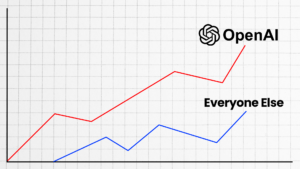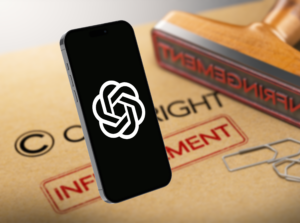To ensure successful product development, you must have an accurate and detailed requirements specification. In this post, we will show how to create high-quality SRS documents so your company can be sure they are getting what’s best for them!
There are two common scenarios for starting a software engineering project:
Scenario #1: Requirements elicitation is a critical step in developing software. You need to be clear about what you want from your application and provide that information so it can be captured on paper or screen for those who will build it!
Scenario #2: With the Instagram-like app idea in mind, you approach your development team and ask them to create an application similar enough for users. You aren’t satisfied until it’s just about perfect because that will make all those hours spent designing worth something!
Requirements or the requirements for a project, in particular, can be challenging to define. This is especially true when trying not only to capture all of your needs but also to ensure they are clear and concise enough so that others will understand what you want without having too many sentences written on each point – which could do reading through them overwhelming! Luckily there’s an easy way around this: creating Software Requirements Specification (SRS) documents where we break down critical characteristics into bite-sized pieces using graphical illustrations called artifacts.
What is, and Why should you create an SRS?
The requirements specification is a vital document describing an app’s technical aspects. It’s intended for use by stakeholders and team members, so it helps them understand what their projects will entail before they start work on them!
The Business Analyst is in charge of creating an SRS document. The person meets with stakeholders or customers to discuss their project and structure all plans, expectations, and requirements. Other team members such as developers can be consulted during this process, but ultimately it’s up for interpretation by the analyst herself.
Requirements are constantly changing, making it challenging to prepare a complete list of all requirements before starting work. In some cases, you might find yourself working with another company that offers their own set of different specifications than what was initially planned for your project, so when switching vendors, this will need to be taken into consideration during negotiations on price and scope if necessary – but remember: an SRS should always reflect current needs!
The more complex a project is, the longer and higher the quality of your SRS document will be.
Benefits of an SRS
A software requirements specification can provide several unique advantages:
Estimating time and cost is very important for software engineers. They must consider all of the features they want to build to estimate how much work will be needed when developing them, as well as any third-party services or tools required by their project’s specifications document (SRS). With this knowledge, teams can stay within budget while providing high-quality results without overextending themselves on either end!
By using an SRS, teams can work more efficiently and better collaborate. The manual contains all the information needed for teammates to communicate effectively, ensuring that everyone is on board during projects – even those who don’t have specific expertise in software development!
To provide clarity for all parties involved, the product owner and development team must clearly understand what they’re expected in terms of features. By using one document, which serves as both guidance and agreement from respective groups on how projects will be executed/what expectations are set up front – misunderstandings can quickly arise if people don’t share common ground about desired outcomes before diving into project details.

What Should you have in your SRS?
The IEEE/ISO/IEC 29148 standard for creating a software requirements specification has three main parts: product overview, requirements and an appendix. Each piece has several sections designed so anyone can understand them without prior knowledge about what’s happening inside your company or organization!
Product Overview
This section of the SRS tells you about the project we are working on. It includes a brief overview and an introduction, with information such as who is going to use this document or what it’s for – so they know where their focus should be when reading through these pages! There also needs to be some mention in here about whether there were any goals met by creating software like this one (i e objectives achieved), success criteria defined if applicable…and more importantly- why do YOU want them?
The types of users section describes all the people who will use your product. You should create buyer personas to define their pain points and needs appropriately, then explain why they need this particular software solution in detail before selling them on its benefits!
Requirements
The technical section of this document provides developers and designers with the information they need to create products that meet business needs and user expectations.
The work scope is like a map that tells you where your team needs to go and what they’ll need for transportation. This section should be visualized so that all members can see it at one time or another throughout the project’s lifecycle!
This high-level scope of work is a table or diagram that displays all the features implemented in the software. It ensures every team member understands what needs to be done, so they can make sure their tasks align with this bigger plan before getting started on them!
When the work scope is complete, it will be easy to see how all of your features fit together. This makes assessing and tracking progress much more manageable than if you were working on a project without clear-cut boundaries or direction!
The external requirements determine the types of interfaces found within a product. There are user-oriented software, hardware and communications channels that all have roles in interacting with databases or other systems on behalf of these particular pieces of the design model to achieve its goals efficiently–and effectively!
Appendix
The project’s appendix can include any information that doesn’t fit in other sections. This is where you’ll put nuances like dates and figures for your SRS, but it might not be necessary if there isn’t anything else to add significance or value on top of what has already been said throughout this document! If adding Appendices isn‘t working out too well with how things are going so far, then feel free to skip them altogether.
A glossary of terms required for understanding the project is listed below. If you use short forms and abbreviations throughout this document, please include them in parenthesized definitions (e.g., ” shortened word” ). The references section is a great place to document any valuable materials or research that might be needed while developing your project.
The more information you provide about your project, the better. This enables your team to identify any assumptions or dependencies that may lead to difficulties during development and give solutions for these issues before they arise – saving both time and money in fixing potential problems down the line!
Here are three steps to making your own SRS!
1. Gathering business and user requirements are imperative to creating an effective SRS. It’s impossible for developers without understanding these needs, as they will be unable to determine how best fit into their company’s goals or what features are needed by customers to make use of efficient software design practices like modularity etc.
2. Decide on the structure of your document: We all know that requirements are the foundation of any project, but sometimes they can be hard to understand. That’s why we recommend user stories for your team members and clients/customers! User story outlines what app users will tell their computer or mobile device to perform specific tasks like viewing content from one place while also being able to use multiple services at once (like checking email).
3. Compile your Requirements: Collaborate with other team members to build a great application. The business analyst or project manager will document this information. If you decide not to work through an SRS, make sure your specification has these high-quality qualities in mind from the beginning!
The software requirements specification is a critical document that should be created during the discovery phase of any project. The SRS serves as an essential foundation for your work. It can help you get in touch with what’s needed to complete projects both large or small successfully, whether it’s an on-site collaboration between engineers at different organizations who need access to tools they may not already own themselves; managing tasks remotely through chat programs like Skype (which has video capabilities) while working side by Side office hours over email communication platforms such as Gmail etc.; creating documentation early about how features will function before developers start writing lines code.
Epimax can help your company design your SRS! Just contact us here!














